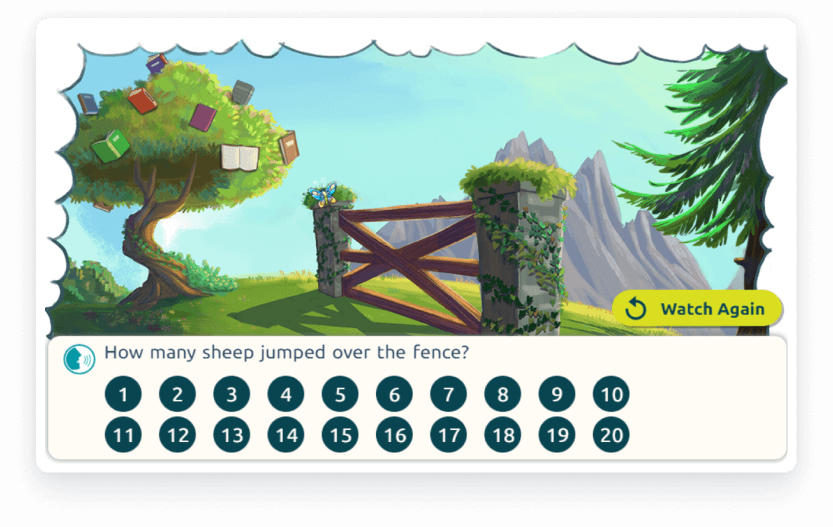
Sheep Counting
Join the slumber party and help the monsters count their way to sleep!

In this activity, students are tasked with counting sheep as they appear, jump over a fence, and disappear. Initially the sheep jump one-at-a-time, but students will need to adapt their counting strategies once they start appearing in groups.

Play it now:
Learning objectives
- Count groups of dynamic events, building upon existing familiarity with counting single dynamic events and/or groups of static objects
- Extend existing counting strategies (or develop new ones) to account for variation in the amount added at each step
Consonance with Matific’s principles
- The activity provides meaningful context to the dynamic counting - students are motivated to help their monster friends
- Students must engage critical thinking when they first encounter “two sheep at once”, and actively adapt their chosen strategy
- Personalized learning is offered by allowing students to watch the events over as many times as they need, helping them refine their strategy
- The art, audio, and characterisation of the activity promotes intrinsic engagement with the subject matter.
I want to know more!
Mathematical background
Counting is a fundamental skill that forms a critical focus area in early childhood learning. To count effectively, students must not only have great familiarity with the way numbers are ordered, and develop some understanding of how numbers relate to each other, but they must also be prepared to employ a diverse range of strategies as the situation changes.
Each of Matific’s activities in this area present students with a new context. For example, students count static snails in one episode, and static fish in another - to an adult, this shift in context is trivial, but for young minds represents a key step in the abstraction process.
As students continue through Matific’s activities, they carefully add to a student’s breadth of contexts that they must count in - counting quickly, counting subsets, counting dynamic events rather than objects, counting systematically, and so on.
This activity assumes students have had some exposure to counting dynamic events, and some exposure to “adding to a total” in a static context. Having seeded ahead, this activity brings together these contexts and encourages students to further refine and practice their counting strategies.
Highlights
As the activity progresses, the sheep jump the fence at different rates - some are fast, and some are slow. There are also audio clues for students, but the difference between “two sheep” and “three sheep” is very difficult to hear. Each of these variables represent aspects of the problem that the student’s strategy must account for.
If a student enters a wrong answer twice, they are given a detailed walkthrough of how they might approach the problem. There is a counting voiceover that quickly counts groups as they appear, increasing the total as the animation plays:

Each sheep has a unique design, one for each monster. Can you tell what each monster has in common with the sheep that they count?

And what mischief is Broog up to?
